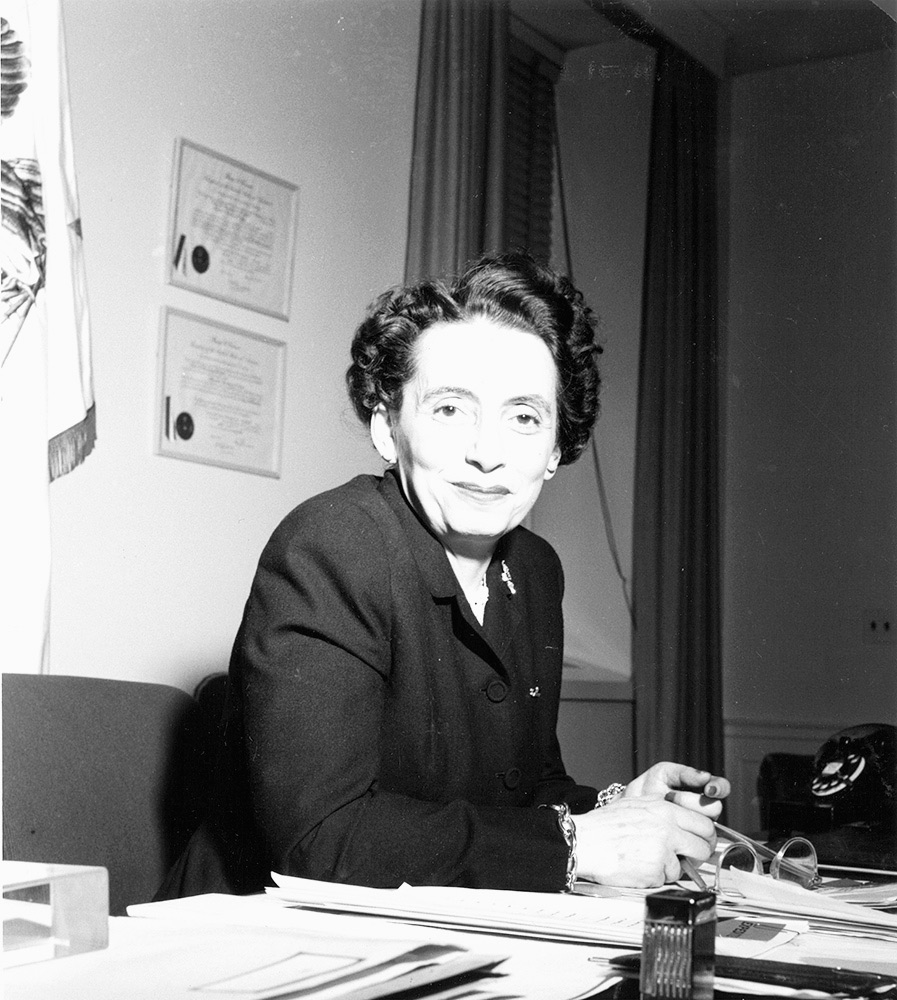Anna Marie Rosenberg may be the most famous American woman you have never heard of.
Life magazine, in the 1950s, described her “far and away the most important woman in the American government, and perhaps the most important official female in the world.”
Life may well have been engaging in hyperbole, but Rosenberg was certainly a woman of stature, a pioneer in the field of labor mediation. Charged with implementing some of President Franklin Roosevelt’s New Deal programs, she played a major role in the GI Bill, transforming the lives of millions of American soldiers returning from World War II. During the war in Korea, she was the assistant secretary of defence and then the first recipient of the Medal of Freedom, the civilian equivalent of the Congressional Medal of Honor.
Despite her undeniable achievements, she has mostly been forgotten. Christopher C. Gorham, in The Confidante: The Untold Story of the Woman Who Helped Win World War II and Shape Modern American (Kensington Publishing), resurrects and pays tribute to her illustrious career in his thorough and accessible book.
Born in Budapest on July 19, 1899, she was the second daughter of Albert and Sarolta Lederer. Albert, a prosperous furniture dealer, left the Austro-Hungarian empire in 1910 after the emperor, Franz Josef, abruptly cancelled a contract that left his business in ruins. He and his family settled in New York City, where Albert managed to bounce back as a manufacturer and importer of furniture trimming, buttons and furriers’ supplies.
In 1919, Anna was still living with her parents when she married Julius Rosenberg, the son of Austro-Hungarian immigrants.
A social activist, she joined the suffrage movement, which lobbied for the right of women to vote. Through her activities, she garnered the attention of two influential public figures — Tammany Hall politician James Joseph Hagan and publicist and lobbyist Belle Lindner Moskowitz, an advisor to New York governor Al Smith.
Moskowitz hired her to reserve hotel ballrooms and orchestras for luncheons, dinner and banquets. Hagan employed her to manage political campaigns. She performed these duties without the benefit of a high school diploma.
Rosenberg went into business in the mid-1920s when she opened a public relations and labor relations firm. According to Gorham, a lawyer and a teacher, she earned the trust of both unions and companies. One of her clients, Nelson Rockefeller, would become a prominent politician.
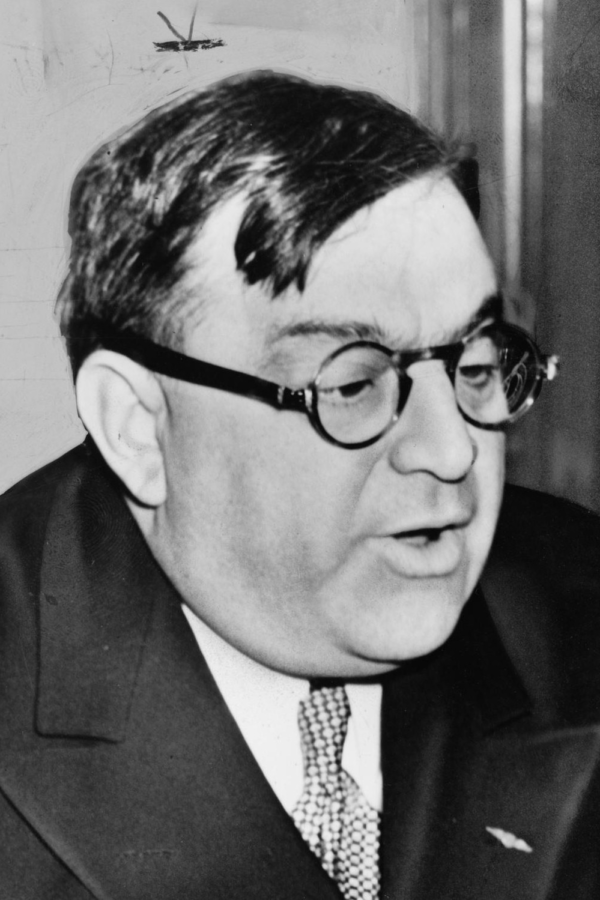
She formed a political partnership with Fiorello La Guardia following his election as New York City’s mayor in 1933.
At the age of 33, she was appointed the regional director of the National Recovery Administration, a New Deal bureau charged with invigorating the economy. Rosenberg was also involved in the passage of the Social Security Act, a landmark piece of legislation.
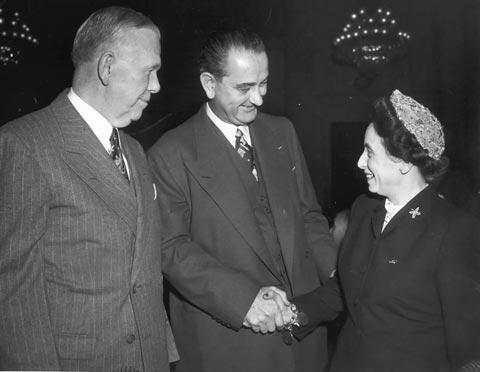
In 1937, she met a young Texas politician named Lyndon Baines Johnson, a liberal who shared her belief in government’s power to transform the lives of the neediest Americans. When he reached the White House after President John F. Kennedy’s assassination, Johnson consulted her on legislation.
Several months before the United States declared war on Japan, the Roosevelt administration created the Fair Employment Practices Committee, whose task was to ensure that defence industries hired workers without regard to color, religion or national origin. This program was especially beneficial to African Americans. Rosenberg was instrumental in its formation and in the establishment the War Labor Board, whose mandate was to arbitrate labor disputes to maintain wartime industrial productivity.
Rosenberg rounded up tens of thousands of workers for the Manhattan Project, which produced the atomic bomb. In effect, she was the de facto secretary of labor.
With the Allied Normandy landings in Nazi-occupied France in 1944, Roosevelt sent Rosenberg abroad on a special mission to determine what American soldiers expected after their demobilization in terms of educational and vocational opportunities. This led to the G.I Bill, which, in her words, would be “one of the largest and most comprehensive initiatives ever enacted in the United States.”
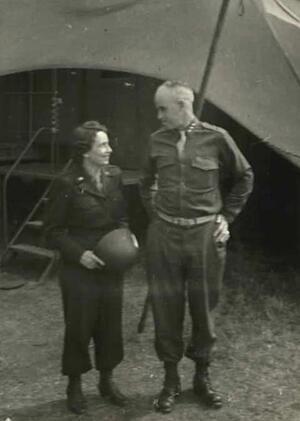
Impressed by her competence, Roosevelt offered her a cabinet position and the ambassadorship to the Soviet Union, but she declined.
However, Rosenberg accepted another assignment from Roosevelt in 1945 just before his death. Her task was to determine how European refugees could be repatriated to their home countries. Thanks to her, Jewish refugees and German prisoners of war would no longer have to live together in the same camps.
With the end of the war, she restarted her old public relations/labor relations company. Five years later, Secretary of Defence George Marshall appointed her assistant secretary of defence. “With that Anna Rosenberg became the most powerful woman ever to serve in the United States military establishment,” writes Gorham.
Her appointment elicited snarls from reactionaries. The antisemitic propagandist Gerald L.K. Smith feared that a “Zionist Jew” would become “dictator of the Pentagon.” Congressman John Rankin of Mississippi dismissed her as “a little Yiddish woman from Austria-Hungary.”
Senator Joseph McCarthy claimed she was a communist. “I was Jewish, an immigrant, pro-labor, and a woman,” she said. “What could have been worse?”
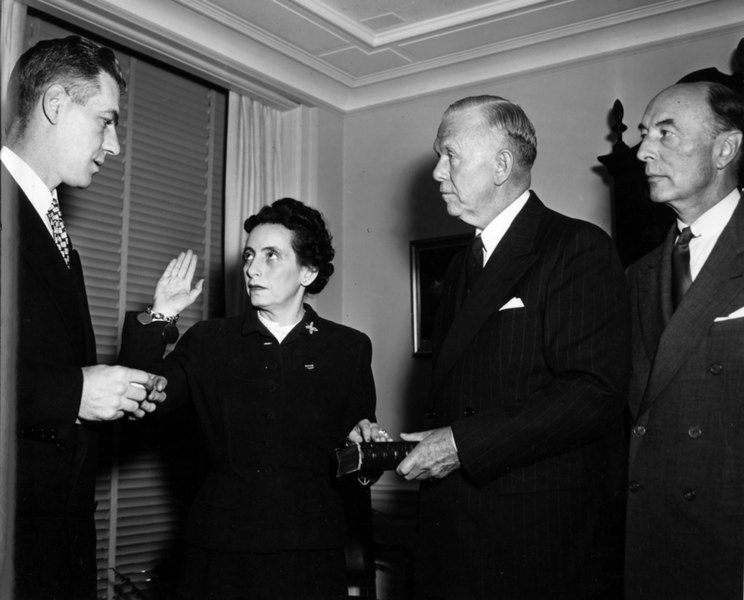
Their offensive rants had no effect whatsoever on Rosenberg’s confirmation. As assistant secretary of defence, she saw to it that the American armed forces would not suffer from manpower shortages and would finally be desegregated.
She resigned in 1953, and in accepting her resignation, President Harry Truman wrote, “Dear Anna, you’ve done a whale of a job. There are no words adequately to express my appreciation.”
Returning to public relations, she collared new clients, including the Studebaker car company. Its president, Paul Gray Hoffman, had administered the postwar Marshall Plan in Europe. They liked each other and decided to get married. The ceremony took place in a Unitarian church in Manhattan.
During this period, Rosenberg advised President Dwight Eisenhower on labor and defence issues. She also tried to keep the ideals of the Roosevelt era alive.
She died on May 9, 1983, having been virtually forgotten. Had she written her memoirs, this may well have not been the case, speculates Gorham.
In closing, he describes her as an extraordinarily driven and dedicated person who helped “defeat the forces of fascism abroad and modernized the lives of millions here at home.”
It goes without saying that Rosenberg’s impact on American national policies was consequential.
